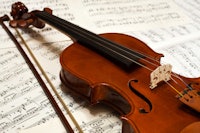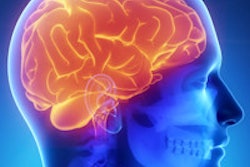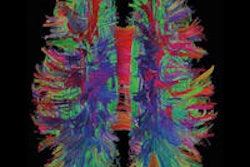
Research carried out in the Beatles' home town has confirmed that musicianship has a significant impact on the right hippocampal shape and subfield volumes. MRI showed musicians have larger volumes in the presubiculum, subiculum and fimbria, probably due to reorganization of hippocampal connections in response to increasingly demanding tasks.
"Expert musical performance is one of humankind's most complex and extensive multimodal activities, as professional musicians practice their rehearsal exercises with high attention and long-lasting commitment," noted lead author Jamaan Alghamdi, a researcher at the Magnetic Resonance and Image Analysis Research Centre (MARIARC), University of Liverpool, U.K. "Therefore professional musicians represent an ideal model for understanding experience-driven neuroplasticity in the human brain, especially in auditory and motor domains."

Alghamdi presented his findings in an e-poster at last month's European Congress of Radiology (ECR), for which he received a certificate of merit from the judging panel.
He collected data from 12 musicians (seven men and five women) with an age of 38 ± 14.07 (mean ± SD) years and 14 matched nonmusicians (10 men and four women) with a mean age of 37 years (SD = 16.62). High-resolution T1-weighted MR images were obtained for all subjects using a 1.5 T Symphony whole body scanner from Siemens Healthcare (176 slices, TR/TE= 1660/3.05 ms; flip angle = 8°; matrix size 256 x 256; voxel size = 1×1×1 mm3).
The anatomical T1 data (DICOM format) of each subject was converted into compressed NIfTI format using MRIcron. Using FSL (a library of analysis tools for functional MRI, MRI, and diffusion tensor imaging of the brain), brain extraction was carried out to clear noncerebral voxels, and automated segmentation was performed by the FIRST tool of the left and right hippocampi.
"Hippocampi were labeled and segmented using the subcortical mask, depending on T1 image intensity," Alghamdi stated. "Registration and segmentation processes of both hippocampi were visually checked at each step to confirm accuracy of the results. F-statistics were then calculated to compare shape differences between musicians and nonmusicians."
The workflow for creating subcortical segmentations was processed using FreeSurfer version 5.1 on a PC running Open SUSE 11.3 Linux software. Automated segmentation of the subfields of the hippocampus was carried out using Freesurfer models built from manual segmentations of the right hippocampus. The segmentation process created nine subfield regions. Five of those regions were considered as part of global gray matter (GM) tissue type: CA1, CA2/3, CA4/DG, subiculum and presubiculum, and one considered as white matter tissue type (fimbria). The hippocampal fissure and inferior lateral ventricle were considered to be cerebral spinal fluid tissue type.
ANOVA (analysis of variance between groups) for repeated measurements was used to compare hippocampal subfields volume values in both hemispheres, he explained. The influence of musical proficiency on hippocampal surface shape was then assessed.
"The group differences of hippocampi shape were significant only in the right hippocampus. The musicians' right hippocampus is larger/thicker than in nonmusicians," Alghamdi pointed out.
ANOVA for repeated measurements showed there was a group-hemisphere interaction effect, but no group-hemisphere-subfields interaction effect. Musicians had large volume compared to nonmusicians in these subfields of the right hippocampus: presubiculum, subiculum, and fimbria.
However, the study did not confirm published data about the positive correlation between hippocampal volume and musical proficiency in male musicians younger than 50 years of age. The authors think this may have been due to the small sample size.
Knowledge of training-induced anatomical neuroplasticity can be applied to neurorehabilitation or delaying strategies of Alzheimer senile dementia, they noted. Furthermore, these image analysis methods -- used here on a nonclinical cohort -- may be of particular use for exploring pathological neural substrates in clinical populations.
Alghamdi's co-author for the study was Dr. Vanessa Sluming, an imaging neuroscientist with expertise in in-vivo structural and functional brain imaging and image analysis. At ECR 2007, she reported on the existence of a significant correlation in hippocampal volumes between gender and musicianship. She showed that male musicians have larger GM concentration in the posterior portion of the right hippocampus and larger hippocampal volumes bilaterally compared to male nonmusicians.
Other researchers have shown that hippocampal volume correlated positively with number of years of orchestral playing in male musicians younger than 50 years of age. In addition, male musicians performed significantly better on visual memory tasks than nonmusicians, and this was significantly positively correlated with the right hippocampal volume.
Alghamdi is currently a PhD student in medical physics. He develops and designs different paradigms to increase understanding of human auditory cortex functions using functional MRI and magnetencephalography (MEG). He is also linked to the department of physics in the faculty of science at King Abdulaziz University, Jeddah, Saudi Arabia. Between August 2009 and December 2011, he conducted amultimodal investigation of structural and functional neural bases of pitch discrimination in musicians and nonmusicians, also at the University of Liverpool.



















